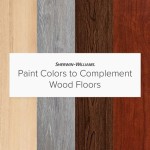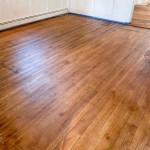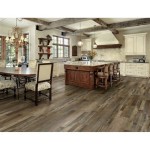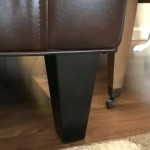Wood Flooring in Fort Lauderdale, FL: A Comprehensive Guide
Fort Lauderdale, Florida, with its vibrant coastal lifestyle and diverse architectural styles, presents unique considerations when selecting wood flooring. From humidity levels to aesthetic preferences, homeowners and businesses alike must navigate a range of factors to ensure the longevity and beauty of their investment. This article provides a comprehensive overview of wood flooring options, installation best practices, maintenance strategies, and relevant considerations specific to the Fort Lauderdale climate.
Understanding Wood Flooring Types
The term "wood flooring" encompasses a diverse range of materials, each with distinct characteristics, advantages, and disadvantages. Understanding these differences is crucial for making an informed decision tailored to specific needs and budget.
Solid Hardwood: Solid hardwood flooring consists of planks milled from a single piece of wood. This type is known for its durability, longevity, and ability to be refinished multiple times. Popular hardwood species include oak, maple, hickory, and cherry. Oak, in particular, is a widely chosen option due to its hardness, grain pattern, and availability. Maple offers a smoother grain and lighter color, while hickory provides exceptional strength and a rustic aesthetic. Cherry is prized for its rich color and elegant appearance.
The thickness of solid hardwood planks significantly influences their lifespan and refinishing potential. Thicker planks can withstand more sanding and refinishing, extending the floor's overall life. However, solid hardwood is susceptible to changes in humidity. Excessive moisture can cause expansion, leading to cupping or buckling, while dry conditions can result in shrinkage and gapping. Therefore, solid hardwood is generally not recommended for basements or areas with high moisture levels in Fort Lauderdale.
Engineered Hardwood: Engineered hardwood flooring is constructed from multiple layers of wood veneer adhered to a core of plywood or high-density fiberboard (HDF). The top layer, known as the wear layer, is made of solid hardwood and provides the desired species and appearance. Engineered hardwood offers greater stability compared to solid hardwood, making it less prone to expansion and contraction in response to humidity fluctuations. This characteristic makes it a more suitable option for basements and areas with moderate moisture concerns in Fort Lauderdale.
The thickness of the wear layer is a critical factor in determining the floor's durability and refinishing potential. A thicker wear layer allows for more sanding and refinishing, extending the floor's lifespan. Engineered hardwood is available in a variety of thicknesses and widths, offering flexibility in design and installation. Some engineered hardwood products are designed for floating installations, which can simplify the installation process and reduce costs.
Laminate Flooring: While not technically wood flooring, laminate flooring is often considered as an alternative due to its appearance and affordability. Laminate consists of a high-resolution image of wood grain applied to a core of HDF, protected by a durable wear layer. Laminate is highly resistant to scratches, stains, and fading, making it a practical choice for high-traffic areas and homes with pets. It is also relatively easy to install and maintain.
However, laminate flooring lacks the natural warmth and texture of real wood. It cannot be refinished, and its appearance may not be as authentic as solid or engineered hardwood. While laminate is more water-resistant than solid hardwood, it is not waterproof and can still be damaged by excessive moisture. Therefore, careful consideration should be given to its suitability in areas prone to spills or humidity in Fort Lauderdale.
Installation Considerations in Fort Lauderdale's Climate
The subtropical climate of Fort Lauderdale presents specific challenges for wood flooring installation. High humidity levels and potential for water intrusion necessitate careful planning and execution to ensure the long-term performance of the floor. Proper subfloor preparation, moisture mitigation measures, and appropriate installation techniques are essential.
Subfloor Preparation: The subfloor, the foundation upon which the wood flooring is installed, must be clean, level, and dry. Any imperfections in the subfloor can telegraph through the finished floor, resulting in unevenness, squeaking, or premature wear. Thoroughly inspect the subfloor for cracks, holes, or other damage and repair them before proceeding with the installation. Ensure the subfloor is properly cleaned and free of debris.
Leveling the subfloor is crucial for achieving a smooth and even surface. Self-leveling compounds can be used to fill in low spots and create a level plane. In cases of significant unevenness, grinding or sanding may be necessary. Proper leveling ensures that the wood flooring is properly supported, minimizing the risk of movement or damage.
Moisture Mitigation: Moisture is the primary enemy of wood flooring, particularly in humid climates like Fort Lauderdale. Conduct a moisture test of the subfloor to determine its moisture content. If the moisture level exceeds the recommended limits, implement moisture mitigation measures. These measures may include applying a moisture barrier membrane to the subfloor or installing a subfloor ventilation system. Moisture barriers prevent moisture from migrating into the wood flooring, while ventilation systems help to regulate humidity levels.
Acclimation of the wood flooring is another critical step in moisture mitigation. Allow the wood flooring to acclimate to the indoor environment for several days before installation. This allows the wood to adjust to the temperature and humidity levels of the room, minimizing the risk of expansion or contraction after installation. Follow the manufacturer's recommendations for acclimation time and conditions.
Installation Techniques: The choice of installation technique depends on the type of wood flooring and the subfloor material. Solid hardwood is typically nailed or glued down to a wooden subfloor. Engineered hardwood can be nailed, glued, or floated. Floating installations involve connecting the planks together without directly adhering them to the subfloor. This method can be faster and less expensive than nailing or gluing, but it may not be suitable for all applications.
When nailing or gluing wood flooring, use the appropriate fasteners and adhesives recommended by the manufacturer. Ensure proper spacing between planks and maintain consistent alignment. Avoid over-tightening fasteners, which can damage the wood. For floating installations, use a high-quality underlayment to provide cushioning and reduce noise transmission. Follow the manufacturer's instructions carefully to ensure a proper and secure installation.
Maintenance and Care for Wood Floors in a Coastal Environment
Maintaining wood floors in Fort Lauderdale's coastal environment requires proactive care and attention to detail. Regular cleaning, humidity control, and protection from scratches and dents are essential for preserving the beauty and longevity of the floor.
Regular Cleaning: Sweep or vacuum wood floors regularly to remove dust, dirt, and debris. Use a soft-bristled broom or a vacuum cleaner with a floor brush attachment to avoid scratching the surface. Avoid using abrasive cleaners or scouring pads, which can damage the finish. Wipe up spills immediately with a clean, dry cloth. Water and other liquids can penetrate the finish and cause staining or warping.
Damp-mop wood floors periodically with a pH-neutral wood floor cleaner. Use a microfiber mop and wring it out thoroughly to avoid excessive moisture. Avoid using steam mops, which can damage the finish and cause moisture damage. Follow the manufacturer's instructions for cleaning and maintenance.
Humidity Control: Maintaining consistent humidity levels is crucial for preventing expansion and contraction of wood floors. Use a dehumidifier during periods of high humidity and a humidifier during periods of low humidity. Aim for a relative humidity level between 30% and 50%. Monitor humidity levels with a hygrometer and adjust accordingly. Proper ventilation can also help to regulate humidity levels.
Protection from Scratches and Dents: Protect wood floors from scratches and dents by using felt pads under furniture legs. Avoid wearing shoes with high heels or cleats on the floor. Use area rugs in high-traffic areas to protect the finish from wear and tear. Trim pets' nails regularly to prevent scratching. Avoid dragging heavy objects across the floor. Use floor protectors when moving furniture.
Refinishing: Over time, wood floors may show signs of wear and tear, such as scratches, dents, and fading. Refinishing can restore the floor to its original beauty. Refinishing involves sanding down the existing finish and applying a new coat of finish. The frequency of refinishing depends on the type of wood flooring, the amount of traffic, and the level of care. Solid hardwood can be refinished multiple times, while engineered hardwood can be refinished depending on the thickness of the wear layer. Laminate flooring cannot be refinished.
Professional refinishing services can ensure a high-quality result. Experienced professionals have the tools and expertise to properly sand and finish wood floors without damaging them. Consider hiring a professional refinisher to restore the beauty of wood floors.

Hardwood Flooring Experts In Florida Don Bailey

Dolphin Carpet Tile Flooring Ft Lauderdale Florida

Hardwood Flooring Experts In Florida Don Bailey

Hardwood Flooring Information Paul S Carpet Floor Ft Lauderdale Fl

Laminate Flooring In Fort Lauderdale Fl Waterproof Durable

Hardwood Flooring Experts In Florida Don Bailey

Top Rated Flooring In Florida City Llc

Hardwood Flooring Information Paul S Carpet Floor Ft Lauderdale Fl

Laminate Flooring In Florida Don Bailey

Macdonald S Flooring







